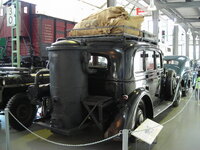Deleted member 68059
Staff Sergeant
- 1,056
- Dec 28, 2015
Methanol is horrendous in a fire as it burns with no visible flames, you can watch someone burning to death and all you`ll see is them writing about, it would beOne can try to make comparison with jet-powered aircraft and their fuel consumption (not that I'm claiming that a methanol-fueled piston engine can match a half-decent ww2 jet in propulsive power and other advantages). Eg. Me 262 carried about 1000-1250L (about 250-300 US gals) of fuel per engine, it was still a fairly short-ranged fighter. Or, the Fw proposal jet conversion of the Fw 190, whose obvious addition was a new fuel tank with almost 900 L of fuel, in order to cater for 1170 L/h fuel consumption (endurance of 1.2 hr).
Methanol is also less flamable than gasoline, something that matters in military operations.
However, main German fossil fuel was coal - perhaps jumping on the steam-powered trucks bandwagon for non-combat transport applications would've released a lot of fuel to the combat units? There was a good deal of coal was also abundant in most of the countries that bordered with Germany, like Belgium, Czechoslovakia, Poland, France, let alone in Ukraine (far easier to capture than the oil fields of Baku).
horrific for ground crews to handle. You can ignite it no problem with a tiny leak onto a hot exhaust pipe. It is possible to blend it with various things to
make it visible in burning, but you`re still left with the problem of needing to carry vast weights of fuel for the same range due to the incredibly poor
calorific value.

